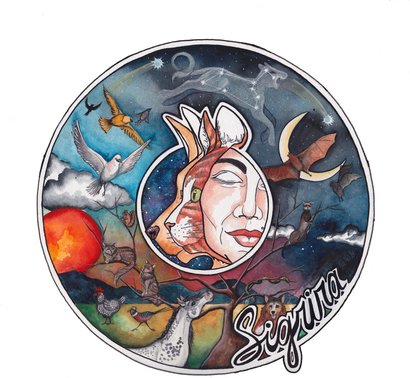 I love living in a neighborhood filled with wonderful humans who celebrate wildlife (and animal companions.) This is our summer newsletter magazine and since it started I’ve been writing about the benefits of creating wildlife sanctuaries in our gardens and connecting more deeply with nature. This article is about how our 💗hearts seek the refuge of nature untouched by human hand, the tradition of leaving a piece of our garden wild. There are no straight lines in nature/ our eyes wish to rest from the constant structure and order- simply gazing at natural beauty relaxes us.✨It supports wildlife, invites fae/elementals, and is necessary for our personal peace - so that we may enjoy a tiny (or large) space that mirrors wildness and beauty to our hearts. 🌿 If you'd like to read the article I've pasted a copy of it below: (Re-) discovering the benefits of wild spaces within our gardens -by Sigrira Savitski Following up on my previous article about connecting more deeply with our gardens, this one focuses on creating gardens that are sanctuaries for ourselves as well as for wildlife. Summer is when nature feels fully awake, there is abundant native plant food for animals and we have been enjoying abundant rain. Hummingbirds enchant us by day and as soon as dusk falls the fireflies draw illuminated paths across our yards. Vegetables have already been planted, so this is a season for harvesting and maintaining. It’s a perfect time to find an area of the garden that we can allow to be “wild.” In our daily lives we are confronted with constant structure and order. We may enjoy carrying this over into our gardens and planning our rows of vegetables and flowers beds, which is great. However- when we sit back to relax after a long day, our hearts seek the refuge of nature untouched by the human hand, our eyes wish to rest, to soften by gazing at wild natural beauty. There is a long tradition of leaving a small portion of the garden wild or uncultivated for the nature elementals or faeries/elves so they can have their own space. This is a lovely way to approach this and for any of you with children it may be fun to encourage them to leave gifts like small crystals for the fae and to “befriend” them by providing food and water for wildlife which they feel protective toward. This wild area could be tucked away in the backyard, and as large or small as you wish. It may be surrounded by stones or some kind of marker/special sign which separates it or blend in. When creating a certified wildlife sanctuary, in addition to avoiding herbicides/pesticides-the requirements are food, water, shelter (in the form of trees/shrubs) and a woodpile that birds can use to escape predators. The wood pile could become the wild space or somehow connect to it. Wild spaces serve as shelter for wildlife, with taller grasses and native plant food sources. As I mentioned above, summer is also when hummingbirds visit our neighborhood and delight us with their presence. They love wildflowers and will enjoy a wild space in addition to the nectar we provide for them As temperatures rise please remember to replace their sugar water every 3-5 days (depending if it is in the sun or shade) and to avoid the red dye if possible. There are lots of recipes for easy homemade nectar online. Find time to relax and observe your wild patch of nature. Notice how it attracts more butterflies and hummingbirds, how spiders feel safe weaving webs that undisturbed will sparkle in the morning light. Maybe a bunny will burrow and make their home there. Perhaps native passionflower vines will grow or pokeweeds which are a stunning magenta shade with berries for birds. Photograph it, draw it or take notes each season as it grows and notice the changes. Imagine what types of fae inhabit it. Enjoy a tiny (or larger) space that mirrors wildness and beauty to our hearts. *Thanks so much to our neighbor Liam for taking these photos of me and our garden for the summer issue and to our Civic Association. Comments are closed.
|
Archives
January 2021
|
|
|
©2013-2025 Sigrira, LLC,

 RSS Feed
RSS Feed